Is It Safe to Heat Up Baby Food in Plastic Babyfood Containers
Is it safe to microwave food?
(Image credit:
Getty Images
)
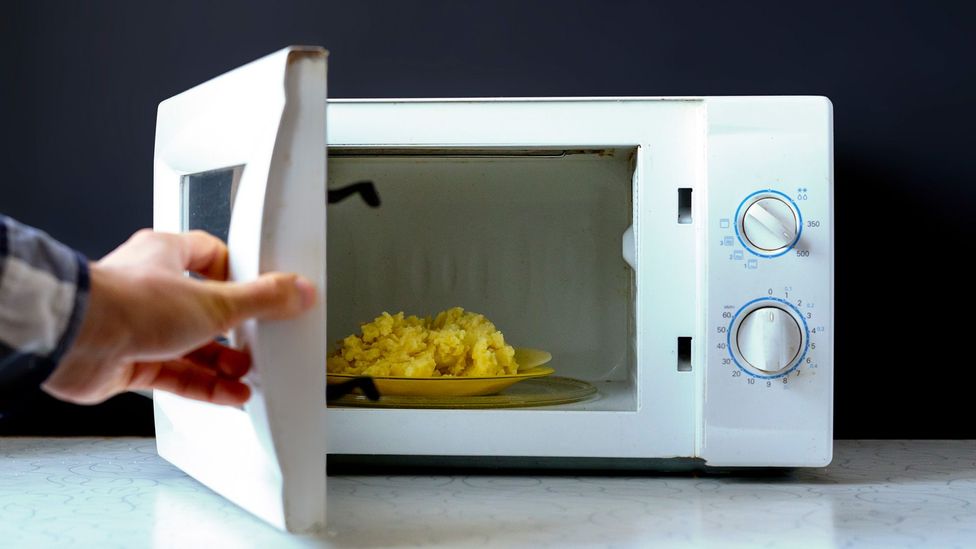
There's nothing risky about microwave radiation – but there is about heating up plastic.
T
To mark the end of a turbulent year, we are bringing back some of our favourite stories for BBC Future'due south "Best of 2020" collection.Discover more of our picks hither.
Despite being a kitchen workhorse for decades, few household items have been more than divisive than the microwave. It'southward hailed as a lifesaver for those who can't, or won't, cook, and portrayed past some chefs as singlehandedly dragging the art of cooking into the gutter.
But some other argue lies beyond the culinary disputes – when is microwave cooking bad for y'all?
When used correctly, there's nothing to worry almost in terms of a microwave's radiation, according to the Globe Health Organization. But other concerns are less articulate – including whether microwaving nutrient causes nutrient loss, or whether heating food in plastic tin trigger hormone disruption.
Losing nutrients
Some research has shown that vegetables lose some of their nutritional value in the microwave.
For example, microwaving has been constitute to remove 97% of the flavonoids – constitute compounds with anti-inflammatory benefits – in broccoli. That's a tertiary more damage than done by boiling.
- The secret tricks in our microwave meals
- Is it condom to reheat takeaways?
- The hidden risks of cooking your food
However, ane 2022 written report looking at the nutrient loss of broccoli in the microwave pointed out that previous studies varied the cooking time, temperature, and whether or not the broccoli was in water. Information technology constitute that shorter cooking times (they microwaved the broccoli for i minute) didn't compromise nutritional content. Steaming and microwaving could even increase content of most flavonoids, which are compounds linked to reduced risk of heart disease. "Under the cooking conditions used in this report, microwaving appeared to be a better way to preserve flavonoids than steaming," the researchers wrote.
Nevertheless they as well found that microwaving with too much water (such every bit the amount you'd use to boil) caused a drop in flavonoids.
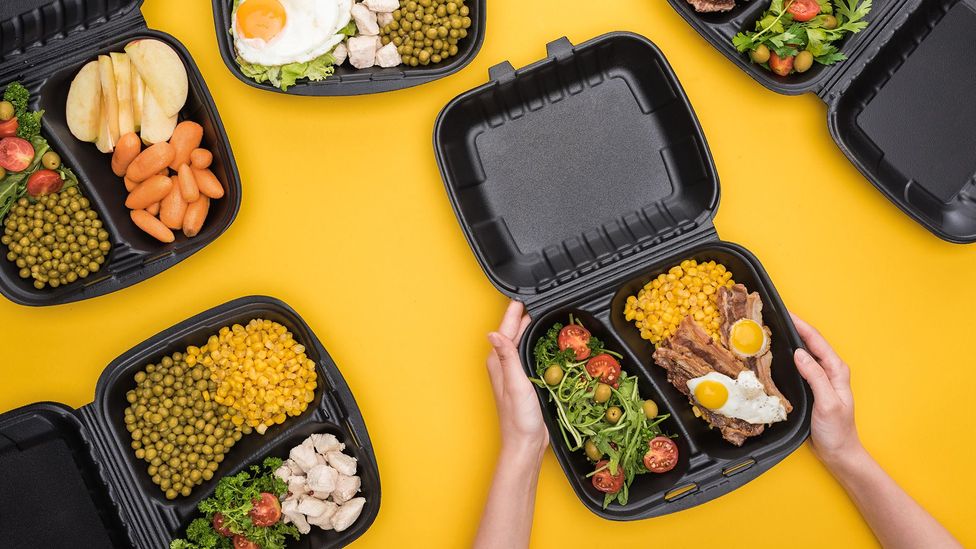
Some foods, such as peas, lose nutrients when microwaved or steamed, but others, like green beans, do not (Credit: Getty Images)
Atomic number 82 researcher Xianli Wu, a scientist at the Beltsville Man Nutrition Enquiry Heart at the US Department of Agronomics, says there isn't one agreed mechanism to explain why microwaving could increment flavonoid content. It could be that microwaving makes flavonoids easier to measure out – perhaps by softening the institute tissue, making them easier to extract – rather than increasing their amount
But there's no straightforward answer as to whether microwaving vegetables will retain more nutrients that whatever other method. That's because each nutrient is different in terms of the texture and nutrients they contain, co-ordinate to Wu.
"Though in general microwaving is a preferred method, the optimum fourth dimension will be different for different vegetables," Wu says. "When because commonly used domestic cooking methods, microwaving is a preferred cooking method, at least for many plant foods, only probably not for every institute food."
In some other study, researchers compared the content of phenolics (compounds associated with various health benefits) of diverse vegetables later being boiled, steamed and microwaved. Microwaving and steaming caused a loss in phenolic content in squash, peas and leeks, but not in spinach, peppers, broccoli or green beans. The researchers as well tested for antioxidant activity.
For both measures, vegetables fared meliorate in the microwave compared to being boiled.
"Moderate heat handling might accept been a useful tool in improving wellness properties of some vegetables," the researchers write.
Heating plastic
We oft microwave foods in plastic containers and wrapping, but some scientists warn of the adventure of ingesting phthalates. When exposed to heat, these plastic additives can break down and leach into food.
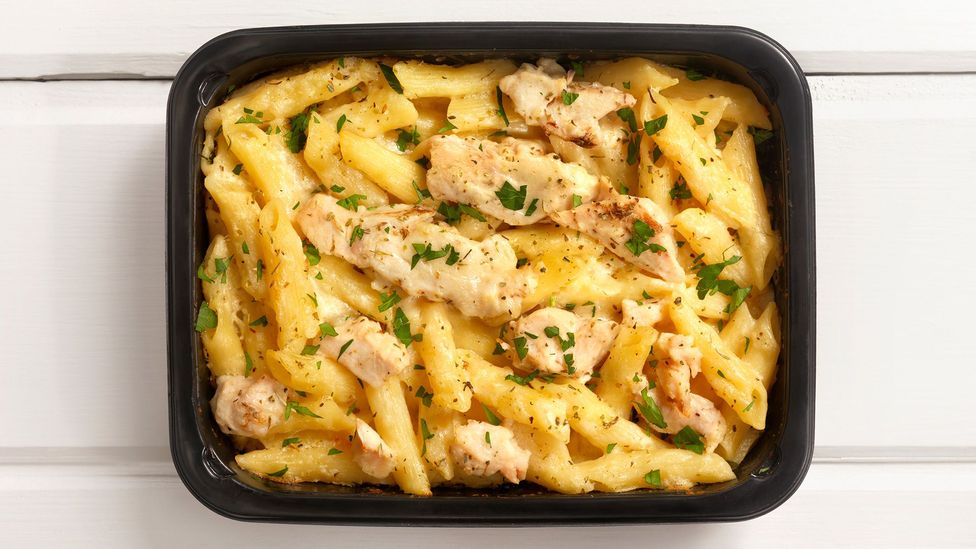
When exposed to heat, plastic additives like phthalates can break down and leach into food (Credit: Getty Images)
"Some plastic isn't designed for microwaves because it has polymers inside to go far soft and flexible, which melt at a lower temperature and may leach out during the microwave process if it goes beyond 100C (212F)," says Juming Tang, professor of food engineering science at Washington Country University.
In a 2011 study, researchers purchased more than than 400 plastic containers designed to comprise nutrient, and plant that the majority leaked chemical that disrupt hormones.
Phthalates are one of the most commonly used plasticisers, added to make plastic more than flexible and frequently institute in takeaway containers, plastic wrap and water bottles. They have been found to disrupt hormones and our metabolic organisation. In children, phthalates can increment claret pressure and insulin resistance, which can increment the gamble of metabolic disorders such equally diabetes and hypertension. Exposure also has been linked to fertility problems, asthma and ADHD.
Phthalates are likewise potential disrupters of thyroid hormones, says Leonardo Trasande, professor of environmental medicine and population health at NYU School of Medicine in New York. Among other things, these hormones are crucial for babies' brain development during pregnancy.
Bisphenol (BPA) is also commonly used in plastic products, and studies accept suggested it may likewise disrupts hormones. Simply research is limited, compared to the corporeality of studies looking at phthalates.
Phthalates are everywhere – even in toys and trunk lotions – and it's still unclear just how much harm they practise. Just well-nigh experts agree that heating plastic with phthalates can increment exposure.
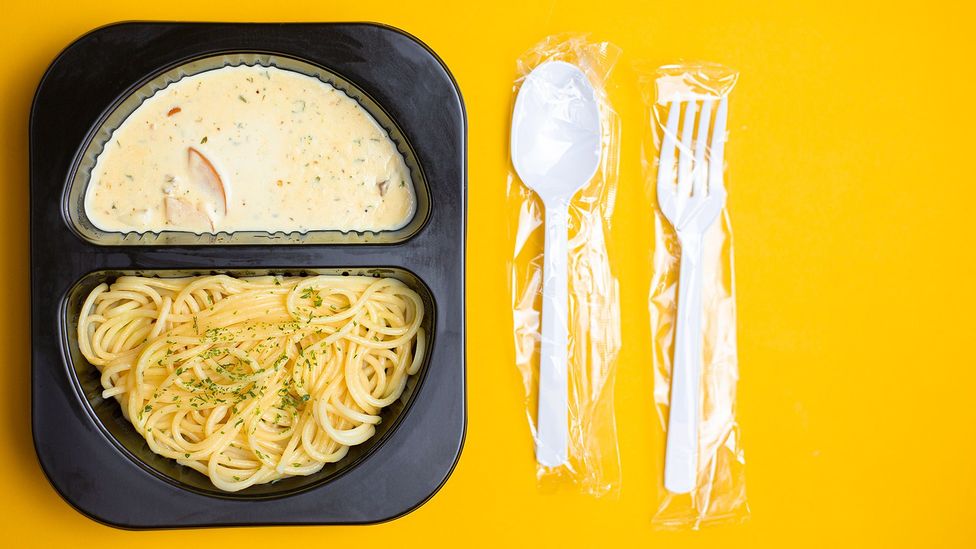
Phthalates accept been found to disrupt hormones and our metabolic system (Credit: Getty Images)
"Microwaving mobilises contaminants," says Rolf Halden, professor and director of the Biodesign Center for Environmental Health Technology at Arizona State University. "This procedure is used in laboratories to extract pollutants from samples, prior to chemical analysis."
And the potential risks don't necessarily increase with how ofttimes an individual microwaves food in plastic containers, Trasande argues – equally the human relationship is non-linear betwixt the amount of chemical exposure and run a risk of hormone disruption.
"The old pedagogy was that the dose mediated poison. Now we understand from multiple studies that low level exposures are where the greatest component of effects happens, and then there's no safe level of exposure," Trasande says.
It'south of import to remember that, when heating food in a plastic container, exposure also can happen with plastic that doesn't touch the food, such as a lid.
"Water rises equally steam from the food, and then condenses on the underside of the lid, and the extracted chemicals from the lid then fall down into your nutrient, contained in the condensation aerosol," Halden says.
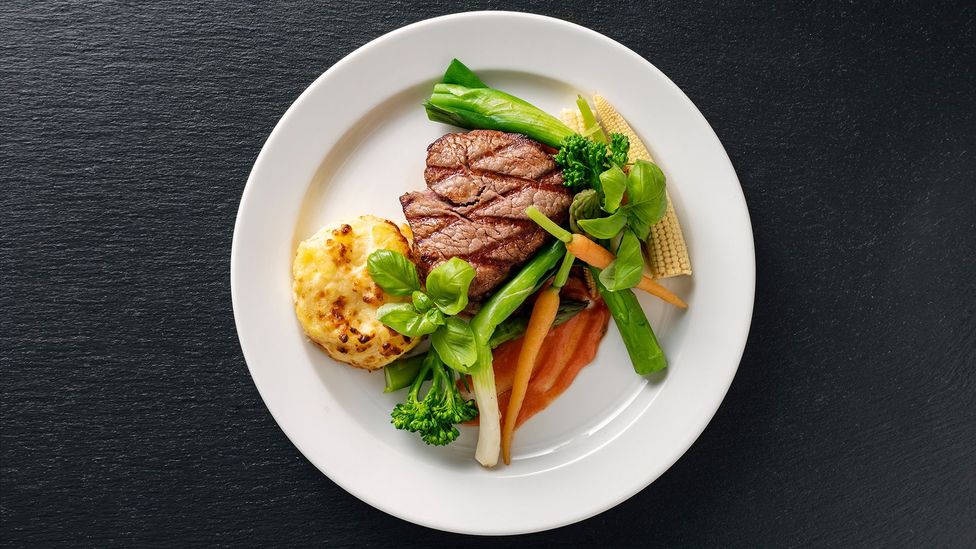
To minimise take a chance, microwave nutrient in a material that isn't plastic, such as ceramic (Credit: Getty Images)
The all-time ways to minimise risk are to use other microwave-safe materials than plastic, such as ceramic. If yous exercise utilise plastic containers, avoid any that are losing their shape, since old and damaged containers are more likely to leach chemicals. You can also bank check your container's universal recycling symbol, often on the bottom of a product – those with a number iii and the letters "V" or "PVC" include phthalates.
Rut risks
Even if you avoid plastics, there are other potential risks of heating nutrient in the microwave – including uneven heating, and the loftier temperatures used.
First, consider using microwaves to reheat, rather than cook, food, equally it may cook unevenly. "Depending on the portion of food that's heated, there volition be some parts that are hotter than others," says Francisco Diez-Gonzalez, professor of food safety at the Academy of Georgia.
"Temperatures will be different in a cross-section of the food. It'due south hard to achieve a completely uniform temperature, specially when talking about raw foods."
Merely it's of import to notation that reheating food comes with risks, too. Food must be heated until it is 82C (176F) throughout to kill any harmful bacteria – and because bacteria can still abound each time food cools back down, you shouldn't reheat a meal more than than once. (Read more nigh whether it's safe to reheat food).
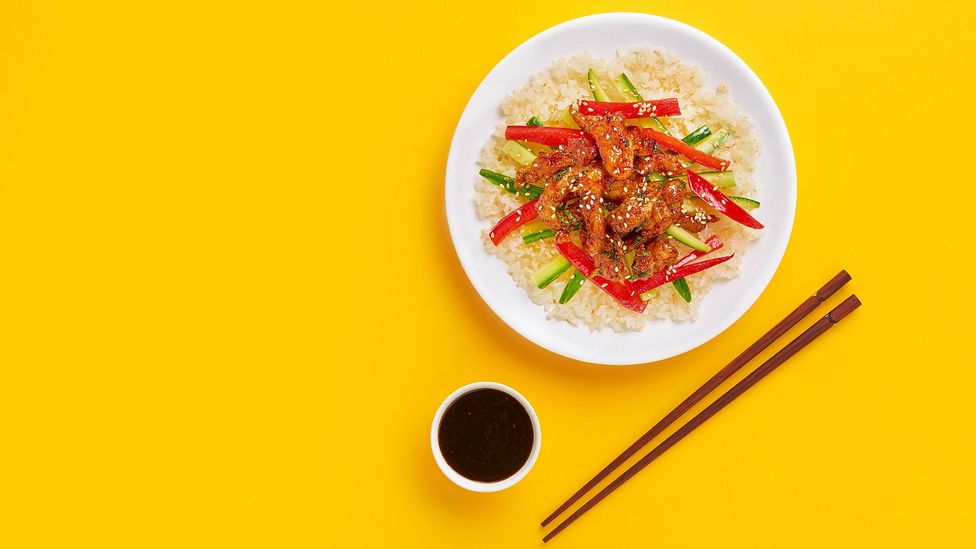
Microwaves should be used to reheat food, not melt information technology, but it'south better not to reheat the same meal more than once – especially rice (Credit: Getty Images)
The high temperatures of the microwave may also pose some risk. Generally speaking, higher temperatures aren't a problem, but there is some research suggesting a risk linked to cooking some starchy foods in the microwave, including cereals and root vegetables.
When Betty Schwartz, professor of nutritional sciences at theHebrew Academy of Jerusalem, saw her students heating jacket potatoes in the microwave on their lunchbreaks, she noticed pocket-sized crystals inside their potatoes.
When she analysed them, she constitute they were high in the chemical acrylamide, which can exist a natural by-production of cooking. Schwartz asked her students to boil their potatoes instead, and found that this didn't create acrylamide, which she says forms in higher temperatures in the microwave.
This is a concern considering animal studies have shown that acrylamide acts equally a carcinogen considering it interferes with cell's Dna, just evidence in humans is limited. At that place is some research to propose that microwaves are more favourable to the growth of acrylamide than other methods of cooking.
"At 100C (212F), in that location's enough energy to modify the automatic joints betwixt molecules to produce a molecule with much college free energy, which can react with Deoxyribonucleic acid, which induces mutations," says Schwartz. "When yous have many mutations it tin produce cancer." Animals studies have shown this to exist the case with acrylamides.
One way around this is to soak the potatoes in water before putting them in the microwave.
Radiations safe
As for the radiation in microwaves, information technology is completely harmless. Microwaves use depression frequency electromagnetic radiation – the same kind used in lightbulbs and radios. When you put food inside a microwave, it absorbs these microwaves, which makes water molecules in the food vibrate, causing friction that heats up the food.

The radiation in microwaves is completely harmless (Credit: Getty Images)
Humans absorb electromagnetic waves, likewise. Only microwave ovens produce relatively low frequency waves and they are independent within the microwave. Even if that weren't the case, the waves are harmless, says Tang. (Of course, the heat in a microwave isn't harmless — so you should never put, say, a living creature inside of a microwave).
"Microwaves are part of the electromagnetic waves we're exposed to daily. When you bake bread, you're exposed to electromagnetic waves and infrared energy from the heating elements of the oven. Fifty-fifty people exchange radioactive waves betwixt each other," Tang says.
"If you're eating crops grown from sunlight, you lot shouldn't be concerned about food from a microwave."
Unlike Ten-rays, microwaves don't apply ionising radiation, which means they don't carry enough energy to detach electrons from atoms.
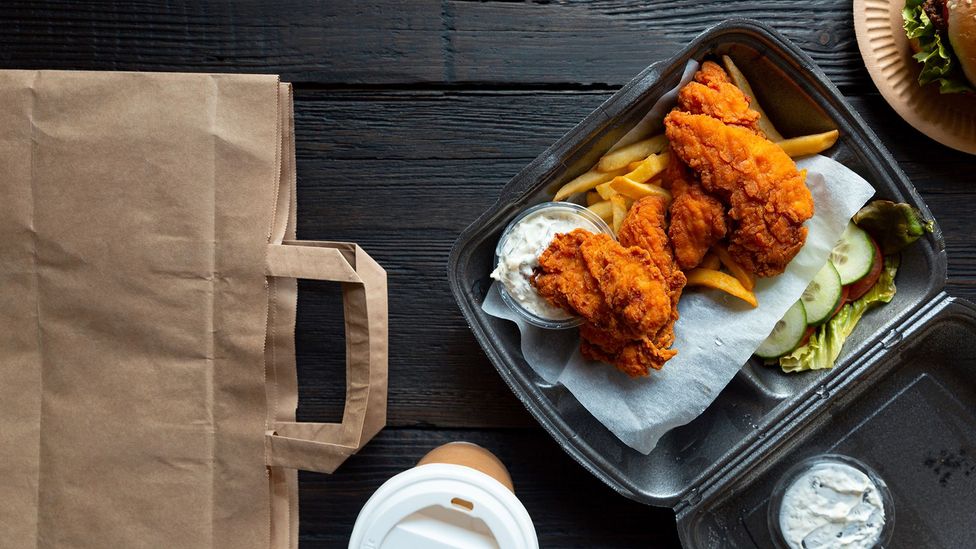
Microwaves don't utilize ionising radiation, so at that place's nothing unsafe well-nigh using them to heat food (Credit: Getty Images)
"Y'all have to break chemical bonds to damage Dna. This is the chief way radiations kills – it mutates cells and causes cancer," says Timothy Jorgensen, associate professor of radiation medicine at Georgetown University's medical centre.
Concerns virtually microwave radiation were largely settled in the years later on the microwave oven was first invented, Jorgenson says.
In particular, a lot of enquiry was carried out past scientists at the Army Natick Research and Development Laboratories in Massachusetts, United states of america, effectually the condom of microwaves, which went a long way to allaying concerns.
When it comes to cooking nutrient in the microwave, in that location'southward a lot to consider. Microwaves take long been accounted a prophylactic kitchen apparatus – merely that comes with caveats, co-ordinate to research. And in particular, experts are still raising concerns about how the plastic packaging nosotros use in the microwave can disrupt our hormones, and, subsequently, touch on our health.
--
Join one million Future fans by liking us on Facebook , or follow united states on Twitter or Instagram .
If you liked this story, sign up for the weekly bbc.com features newsletter , called "The Essential List". A handpicked selection of stories from BBC Future , Culture , Worklife , and Travel , delivered to your inbox every Friday.
Source: https://www.bbc.com/future/article/20200714-is-it-safe-to-microwave-food
0 Response to "Is It Safe to Heat Up Baby Food in Plastic Babyfood Containers"
Enregistrer un commentaire